Sydney’s hugest and newest supermarket has landed. Here’s how to navigate it
Owners of Soul Dining, Illa Kim and Daero Lee, take us around sprawling new KMALL09 and share their go-to Korean pantry ingredients and top cooking tips.
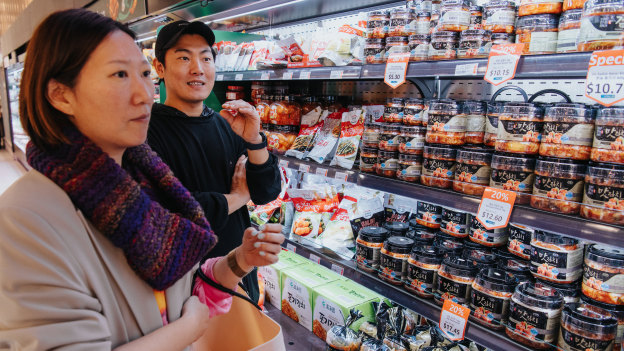
The new KMALL09 at Lidcombe Shopping Centre became the largest Asian supermarket in Sydney when it opened last month. Within minutes of wandering its aisles with restaurateur Illa Kim and head chef Daero Lee from contemporary Korean standout Soul Dining, I’ve managed to fill an entire basket with produce, condiments and (most importantly) snacks.
I’m familiar with some of them. There’s kimchi (fermented cabbage), gochujang (chilli paste) and tteokbokki (rice cakes), which are gradually entering the greater Australian lexicon with the rising influence of Korean culture and cuisine.
But others, like perilla leaves, Yondu (vegetable umami) sauce and maesil cheong (plum syrup), are new additions to my pantry − and I’m going to need them.
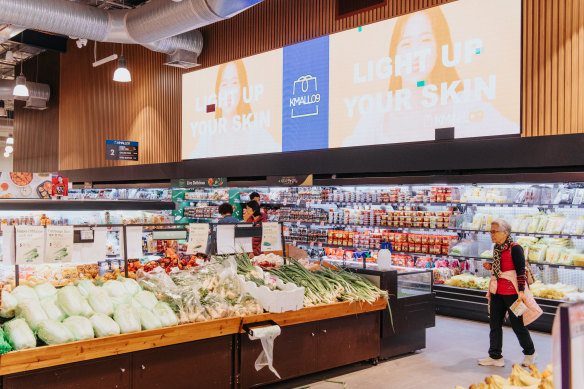
Korean cuisine developed its unique flavour over many thousands of years, influenced by the nation’s strong seasonal changes, the customs of its ancient court, Japanese colonisation, American influence, and financial hardship during the Korean War. It is characterised by deep umami flavours, lots of fermentation, rice and spice − and often requires a few specialised ingredients to get it right at home.
With the help of Kim and Lee, here are some Korean cooking essentials − and some fun additions to keep an eye out for next time you’re in a Korean supermarket.
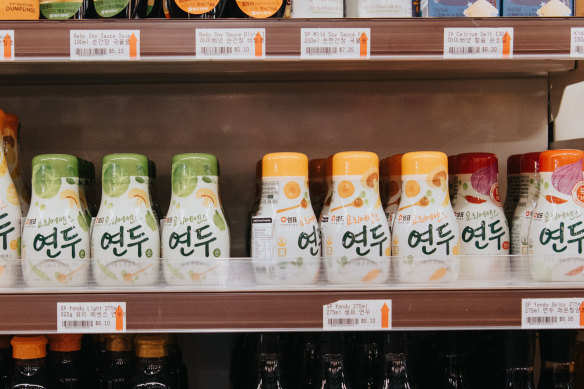
Yondu
If there’s one thing you should buy on this list, it’s Yondu ($8.10). A relative newcomer to the essential Korean pantry, Lee says it’s the secret ingredient professional Korean chefs are using to make their savoury dishes really sing, and you can use it on practically anything.
“It has a lot of flavour in it, it’s like a natural version of MSG,” Lee says. “You can add it to anything to give it an extra boost of umami.”
It’s a vegetable-based umami “seasoning sauce” made from triple-fermented soy beans and concentrated vegetable broth, and tastes like a soy sauce mixed with (a gentler version of) Vegeta Gourmet stock powder. One or two teaspoons are recommended for most dishes, from soups and stews to pastas and grilled vegetables (whether they’re Korean or not). You can add it during any part of the cooking process.
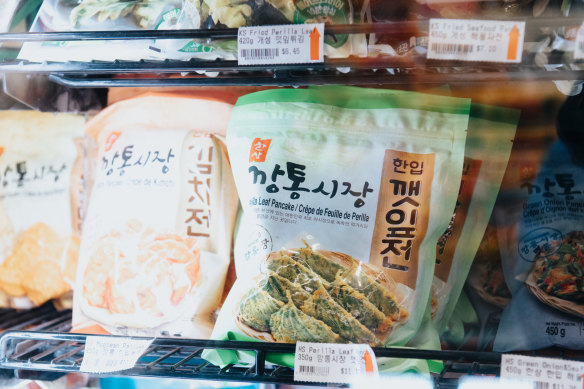
Kkaennip (perilla leaves)
As someone who cooks Korean dishes semi-regularly at home, I am genuinely embarrassed to admit I’d never heard of perilla leaves. They’re a key ingredient in Korean cuisine − served steamed, fried and pickled; used whole in wraps and barbecue; and shredded to add extra flavour to soups, stir-fries and salads.
“We always pick up perilla leaves: they’re a staple,” says Lee. “Think of it like Korean parsley, we use it the same way to garnish dishes.”
Perilla leaves are bright emerald, a little bit fuzzy, and about the size of my hand. They look a little like Japanese shiso leaves, but taste entirely different. Kim describes them as having a unique flavour, somewhere between mint (they are part of the mint family) and coriander, “without any of the soapiness”.
They’re sold fresh in packages of about 15 leaves ($4.10), which Lee says will last up to two weeks in the vegetable crisper. You’ll only need four or five leaves for most recipes.
Kim says she likes eating them as a snack, whole and deep-fried in tempura batter. And if that’s too much work, you can buy pre-made tempura perilla leaves in the frozen food section.
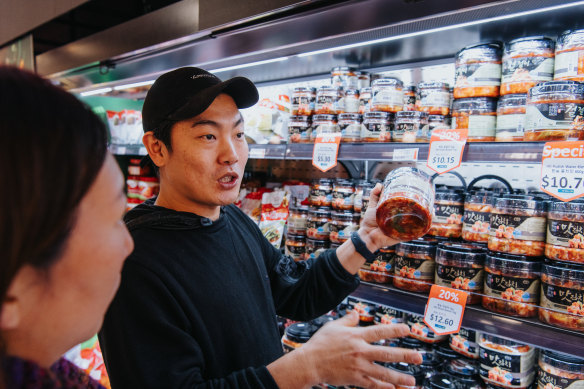
Kimchi
Let’s start with the basics. When you see kimchi on a menu or in a supermarket, it’s most likely referring to baechu-kimchi: the popular red-hued, cabbage kind, which tastes salty, sour and a little spicy. It’s made from wombok (Chinese cabbage) soaked in a salty brine, then seasoned and fermented for a few days with gochugaru (chilli powder), garlic, ginger and spring onions (but you’ll often see carrots, sugar, fish sauce and salted seafood like anchovies or shrimp added to the mix).
While kimchi has been around for thousands of years, Lee says the red variety was only introduced after Portuguese traders brought chilli peppers to Korea in the 1600s. So, if you’d like to try traditional kimchi, go for baek-kimchi (white kimchi).
Kim explains there is young and old kimchi, and the one you buy is a matter of preference: do you prefer crispy and fresh, or deep and flavoursome? She prefers fresh kimchi from Hannong Foods ($6.60), made in Sydney using local ingredients.
Kimchi is a versatile ingredient, eaten on its own as banchan (a side dish) or added to an endless number of soup, stews, rice and noodle dishes (as well as my favourite, kimchi pancakes).
“We do everything with it,” Lee says. “I like it in a stew, with a big chunk of braised pork belly.”

K-BBQ
If you have a portable gas stove at home, you can put together an easy dinner party, Korean barbecue-style. Put the stove in the middle of a table, surrounded by bowls of thinly sliced meat, vegetables, sauces (pre-made is fine to avoid buying dozens of ingredients, Kim says) and sides, and your guests can do the cooking themselves.
You’ll need to buy Korean barbecue meat, available pre-sliced from an Asian butcher or in the frozen food section of the supermarket. Kim says they’d usually pick up at least four varieties, to be consumed in the following order: unseasoned beef, seasoned (marinated) beef, unseasoned pork and seasoned (marinated) pork.
“The right order is to go from less flavour, to more flavour, then less fat, to more fat,” she says.
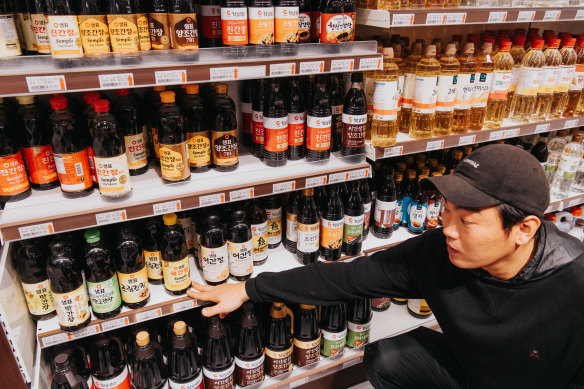
Soy sauce
“Ah, the most important thing,” Lee says as he approaches the aisle of soy sauce bottles.
The red bottle of Sempio soy sauce (jin ganjang) ($3.50) is his go-to for its versatility: “This is the essential, basic soy sauce. If you only buy one, buy this one.”
If you want to get fancy with it, Lee suggests trying guk gangjan, a saltier version made for flavouring an entire pot of soup, or yangjo ganjang, naturally brewed for at least six months in the traditional Korean way, with a stronger and deeper umami flavour (great as a dipping sauce).
So, what’s the difference between that and the Kikkoman soy sauce more commonly found at Coles or Woolies? Well, Japanese soy sauce typically combines wheat and soybeans for a lighter, sweeter flavour; whereas Korean soy sauce is usually gluten-free, made from just soybeans, salt and water.
“But if you can’t find Korean soy sauce, you can substitute it with Kikkoman or another brand,” Lee says.
The king spoon
It’s the utensil everyone in Korea wants: a versatile combination of ladle and spoon, capable of scraping rice out of pots, slicing soft food, and ladling liquid.
On social media it’s praised as the ultimate spoon for eating soups and stews, allowing diners to scoop up broth, then use their chopsticks to pile on noodles, meat or eggs to create the perfect mouthful.
The “king spoon”, as some call it, went viral after Korean celebrity Jeon Hyun-moo used one on the reality television show I Live Alone. It’s difficult to find in-store because it sells out so quickly, but here it is: sold for $16 in the small utensil section of KMALL09. Lee is stoked.
“Everybody is crazy about it,” he says. “I needed to buy it, but I thought I’d have to go to Korea to find it.”
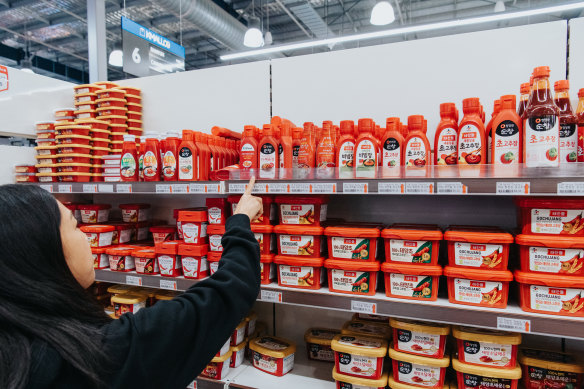
Gochujang
Gochujang is a fermented chilli paste, and it’s required for many Korean recipes, such as bibimbap (rice bowls) and tteokbokki (rice cakes).
The combination of chilli powder, glutinous rice, fermented soybean powder, barley malt powder and salt is thick, bright red and sticky, with a savoury, funky flavour and a big hit of spice. Recipes usually ask for one or two tablespoons, but start by halving the amount if you’re not used to spice. And the best thing? You can’t go wrong when choosing one.
“I’ll be honest with you, there’s not a huge difference between them,” Lee says.
“Just make sure you buy the right size for you − it’s best eaten quickly after you’ve opened it, so if it’s just an occasional food, you’re better off buying the smaller size.”
Gochujang is usually found next to ssamjang, which comes in a green container. Ssamjang uses similar ingredients, but it’s softer and sweeter with the addition of sesame oil, onion, garlic and (sometimes) brown sugar. It’s more of a condiment than a cooking ingredient, best used on meat like steak or pork belly, or as a dipping sauce at K-BBQ.
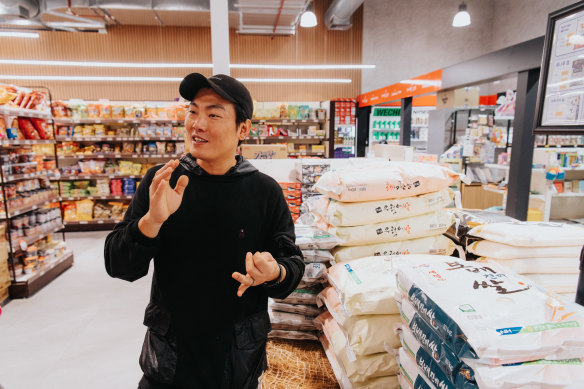
Rice
Good-quality rice is worth splurging on, says Lee. It makes sense − if you’re eating rice with every meal, as Lee and Kim do, it had better be good.
“We eat rice for breakfast, lunch and dinner, so we see it very differently,” Lee says.
“We mostly buy haepssal, which means new rice, harvested [within the past six months]. It’s got more shine and more starch.”
Starch doesn’t break down as quickly when cooking fresh rice, so the grains become slightly stickier, glossier and retain more of their flavour. Harvest times are recorded on bags of Korean rice, though you may need to use a translation app to find them.
They recommend “snail rice”, a premium rice grown by Nonghyup in Uiseong county which uses snails instead of traditional herbicides to keep weeds at bay.
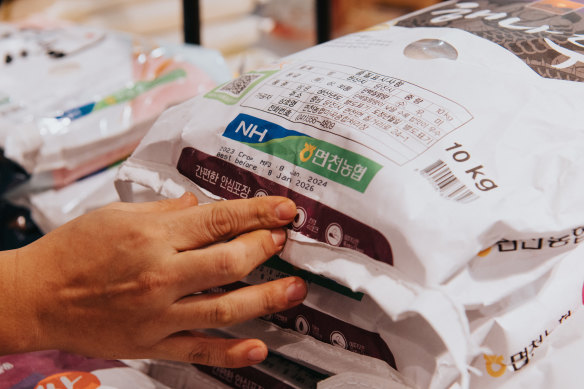
When in doubt, look at the price tag. “If you spend more money on rice, it’s worth it,” Lee says.
Cooking rice is a precise art in Korean cuisine, and most prefer to rely on high-tech rice cookers rather than risk human error. Lee and Kim advise investing in a Cuckoo electric rice cooker with a pressure-cooking function and a minimum six-cup capacity for the best results.
“It makes good rice, just incredible,” Kim says.
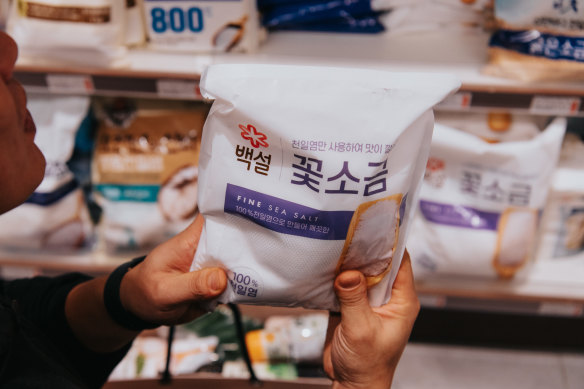
Salt
Korea is on a peninsula surrounded by sea, so it produces a lot of sea salt. That means you can usually find high-quality sea salt for incredibly cheap prices at Korean supermarkets − I picked up a 1kg bag of CJ Natural for $4.20.
There are just two types: a fine grain for everyday cooking, and a square grain with greater minerality, used in pickling and cooking pasta. For an extra flavour kick, try the fine sea salt mixed with MSG (scientific studies have disproven the myth MSG is harmful).
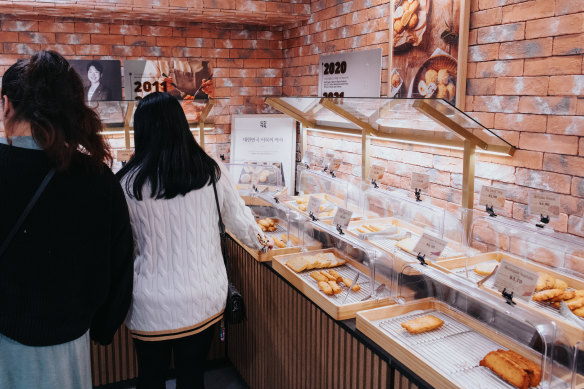
Snacks
You can’t leave without taking home a couple of treats − you’ve earned it. In the bakery section you’ll find the viral Korean pastry, the “pressed croissant” or “crumple” ($8.50). Imagine steamrolling a croissant then frying it in sugar, and you have the right idea.
There’s also an entire section dedicated to the famous Korean fishcake bakery, Samjin Amook. It’s set out like a miniature bakery, but instead of bread rolls and buns, there are dozens of varieties of seafood cakes on sticks, from “big hot pepper” fish cakes to shrimp croquettes.
Kim makes a beeline for the Orion Jelly My Gummy Candy in grape flavour ($1.70): “You’ll love it!” she says. She’s right, I finish the entire bag during the drive home.